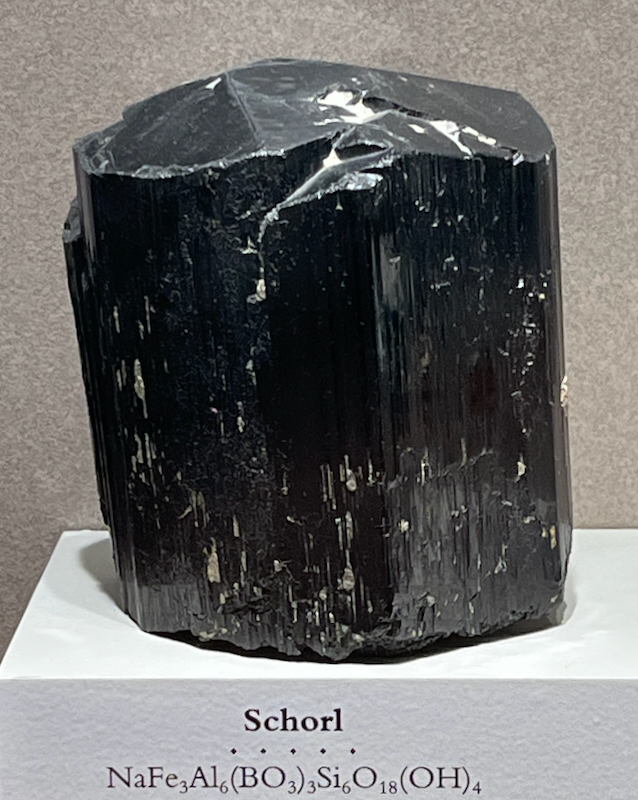Schorl (Black Tourmaline)
Although tourmaline comes in many colors, when it’s elbaite, and even in crystals with multiple colors that look like a piece of watermelon, the most common color you’ll find is black. And when it’s black, tourmaline is called schorl. The mineral is named after a town in Germany where there was a mine way back in the Middle Ages that had a lot of black crystals in the rock. One thing that makes schorl so common is that iron is so common as well, and iron is what makes schorl black. You can find schorl in lots of different places, for example in pegmatites and in schist. In pegmatites, schorl can form crystals that are up to several feet long, and schorl crystals are used as an “indicator mineral” that tells you something even better is nearby. In a pegmatite, if you find a layer of rock that has a lot of schorl and garnet in it, you know there’s a good chance that the layer below it has gemstones in it, like elbaite and beryl. In fact, sometimes the crystals of schorl seem to be pointing at the gemstone pockets. In schist, the schorl crystals are usually smaller and sometimes occur in small sprays. As a result, sometimes they get confused with hornblende.
| Formula | Group or Type | Shape | Hardness | Specific Gravity | Streak | Luster |
|---|---|---|---|---|---|---|
| NaFe2+3Al6(Si6O18)(BO3)3(OH)3(OH) | Tourmaline | Trigonal | 7–7.5 | 3.1–3.2 | White | Vitreous to waxy |

